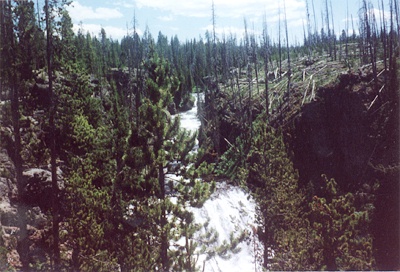All Nonfiction
- Bullying
- Books
- Academic
- Author Interviews
- Celebrity interviews
- College Articles
- College Essays
- Educator of the Year
- Heroes
- Interviews
- Memoir
- Personal Experience
- Sports
- Travel & Culture
All Opinions
- Bullying
- Current Events / Politics
- Discrimination
- Drugs / Alcohol / Smoking
- Entertainment / Celebrities
- Environment
- Love / Relationships
- Movies / Music / TV
- Pop Culture / Trends
- School / College
- Social Issues / Civics
- Spirituality / Religion
- Sports / Hobbies
All Hot Topics
- Bullying
- Community Service
- Environment
- Health
- Letters to the Editor
- Pride & Prejudice
- What Matters
- Back
Summer Guide
- Program Links
- Program Reviews
- Back
College Guide
- College Links
- College Reviews
- College Essays
- College Articles
- Back
My Research Paper
Two hundred and fifty species are found in Madagascar, of which 70% of them are found nowhere else in the world. Approximately 95 percent of Madagascar’s reptiles, 89 percent of its plant life, and 92 percent of its mammals exist nowhere else on Earth. Madagascar is the home of many unique ecosystems--both natural and manmade; however, these ecosystems--and the biodiversity they support-- are being threatened, and man must work to conserve them.
One of the unique ecosystems of Madagascar is the rainforest. The coastal rainforests of Madagascar are unique due to the fact that the plants are salt-tolerant and can extract water from the sand they grow in (“Ecosystems in Madagascar”). These forests are some of the rarest in this ecosystem. You can compare this rainforest in structure to the blackwater forests of the Amazon Basin or the heath forests of southeast Asia. The article goes on to explain that there are different types of rainforests that are each at a different elevation. The lowland rain forests have an elevation of 0-800 meters. Since there are warm temperatures, the humidity hovers around 100% year round, and it rains 80 inches annually.The Montane forest is the next step higher, and is cooler than lowland forest. A lot of epiphyte [plants that grow on trees] including orchids, mosses, and lichens grow here. Some animals that are found there are lemurs and chameleons. The cloud forest elevation is above 1,300 meters; cool and covered in mist. The trees are shorter than lowland forests. High elevation is the highest elevation at above 1,300 meters. In this forest you can find miniature palm and orchid trees (“Ecosystems in Madagascar”.) These forests are a big part of Madagascar’s ecosystem, and the animals depend on them.
Global climate change is taking a very big toll on the ecosystem of Madagascar also. As the climate changes, the result of human activity will cause the temperature to rise, ocean currents to change, and cause extreme climate events to happen more frequently. For example, Madagascar’s mangrove forests are crucial to protecting the island nation’s wildly biodiverse but fragile ecosystem and sustaining the Malagasy people who have fished and farmed on these coasts for centuries (“Adapting to the Effects of Climate Change in Madagascar”). When the climate changes, sea levels rise from one side and erosion and water run off harm the mangroves from the other. In fact, 333,000 hectares of mangrove have already been destroyed, and this will keep on happening fast (“Adapting to the Effects of Climate Change in Madagascar”). These forests provide a habitat for fish and animals with useful resources that the people need to live. Without them in their ecosystem they might have to go somewhere else or find different resources.
Human impact, however, is threatening the ecosystems and biodiversity of this place. Deforestation is a major problem on Madagascar’s rainforest. The people have been cutting down the trees for a long time and is causing the extinction of rare animals. Five percent of the worlds species reside in Madagascar. All of these remarkable and rare species are in grave danger because of humans destroying their habitat. The tropical rainforest have been largely deforested over the past centuries. Many of the problems the forests have right now are due to the colonial period when France turned them into coffee fields.(“Madagascar’s Tropical Rainforest “). Some animals that have become endangered because of this are; big footed mouse, indiri lemur, and the Malagasy giant rat. If there habitat is gone there are a few responses that the species might take. One thing is they can migrate northern or southward to a different ecosystem. If they can’t find an ecosystem to live in other than the one that is being destroyed; they could be in danger to be extinct forever from Madagascar.
Conservation efforts are currently underway in Madagascar to save the amazing animals and ecosystems. The government under President Marc Ravalomanana are working to expand area of protection for forest, keep endangered wood off the markets, and make logging illegal in some places. They have turned some of the forests into National Parks. Ranomafana Park was created in 1991 and has an area of 41,600 hectares of land.(“Madagascar’s Tropical Rainforest”). In the park they have a research center for lemurs and other parts of the ecosystem. This is still a very big problem and isn’t getting much better. Madagascar is full of wonderful animals, plants, insects, and many of other things. People need to keep on informing people and taking action to save the ecosystems of Madagascar.
Works Cited
"Conservation & Sustainable Development." RSS. MacArthur Foundation, 27 Nov. 2011. Web. 03 Mar. 2013.
"Deforestation in Madagascar(MADAGAS)." Deforestation In Madagascar. N.p., 17 Dec. 1996. Web. 03 Mar. 2013.
"Ecosystems in Madagascar." Ecosystems in Madagascar. N.p., 2012. Web. 21 Feb. 2013.

Similar Articles
JOIN THE DISCUSSION
This article has 0 comments.
